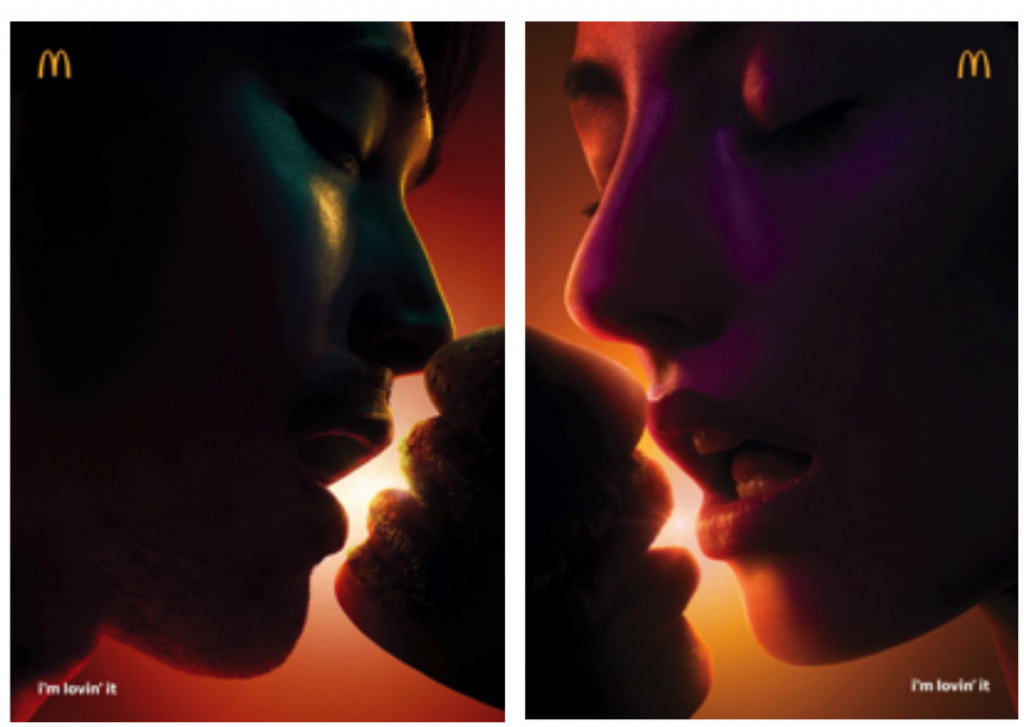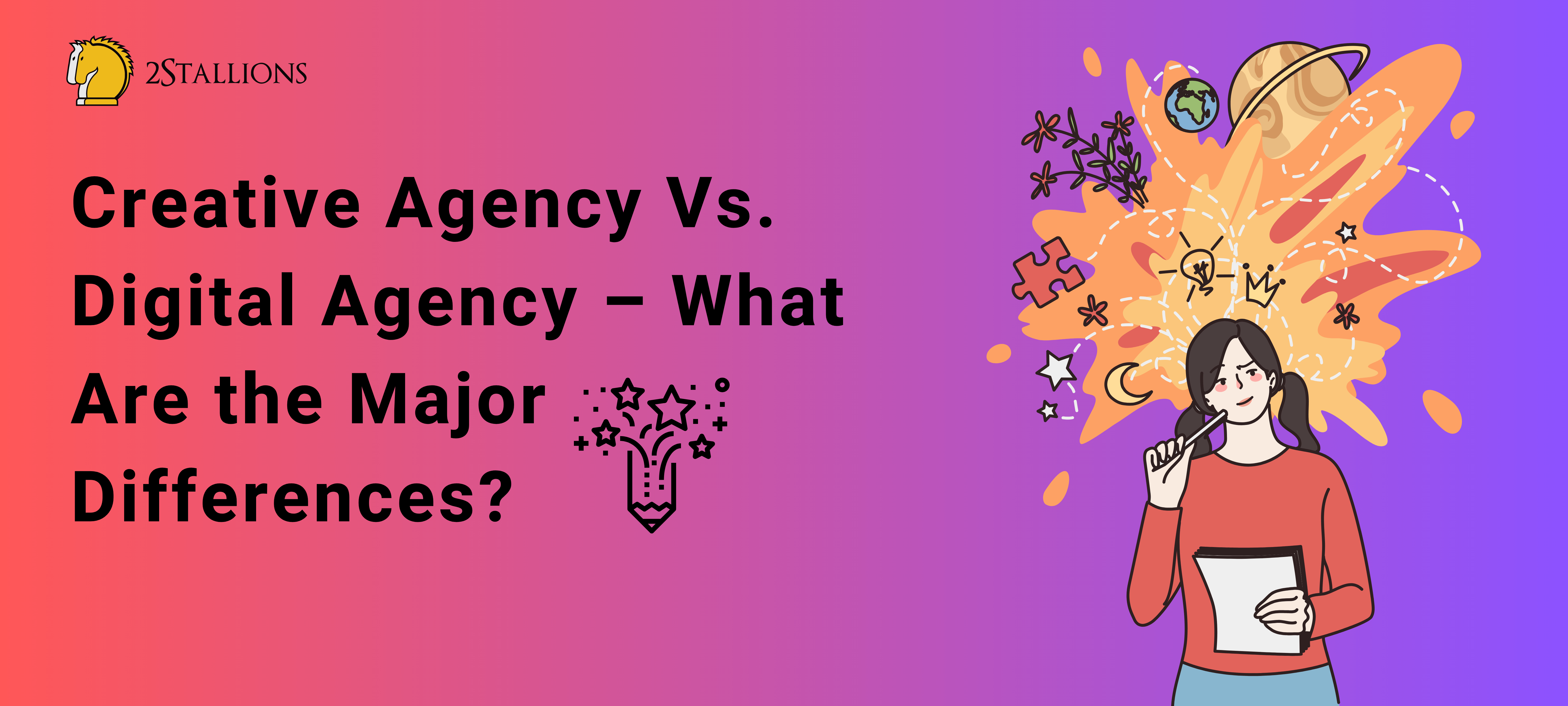Content
SHARE

Do you remember the last time you saw an ad without any appealing design or images? Probably not. You won't capture anyone's attention without a catchy headline and the right visual design elements. Headlines and visuals matter! Why? Because the average human attention span is only 8 seconds. This impacts marketers worldwide, making visual design even more vital to any successful marketing initiative.
Source: Toptal Visual Designer Vs. Graphic Designer
What is Visual Design?
Visual design isn't merely an add-on in a creative project—it's the lifeblood that elevates a website, marketing campaign, or even a flyer into a captivating, effective piece of communication. Far from just aesthetics, visual design combines colours, shapes, imagery, and typography into an irresistible visual narrative. Visual design is a language that speaks directly through visual elements to convey information efficiently.
It's not just about what looks "pretty"—it's about understanding your target audience and crafting visual experiences that resonate emotionally. Consider typography; the suitable typeface doesn't just set the textual tone; it warrants an emotional aura around your content. Strategic font choices and tasteful layout can amplify your message, making it resonate profoundly with your audience.
Visual design is not just about beautifying a project; it's a systematic approach to creating visually compelling narratives that look great, engage, and inform. Whether you're harnessing the power of AI or sticking to time-tested techniques, grounding your work in foundational principles and stringent best practices will ensure you craft visually stunning and genuinely captivating designs.
Visual Design in UX
In User Experience (UX) design, visual design is the aesthetic cornerstone that complements and enhances the overarching design architecture. While UX encompasses the overall feel of the experience, incorporating aspects like strategy, scope, and structure, visual design zooms in on the tangible elements users interact with. From colour schemes and typography to iconography and spacing, each visual element contributes to a user's journey, subtly guiding them through the interface.
What's fascinating is how visual design in UX is not an isolated discipline but an integral part of a holistic design process. It works in synergy with other elements of user experience to fulfil the strategy, define the scope, and create an intuitive structure. When executed with precision, visual design ensures visual cohesion and a functional, accessible, and emotionally resonant user experience.
[thrive_leads id='8320′]
Garrett's Elements of User Experience
Source: Interaction Design Foundation
Jesse James Garrett, a well-known figure in the UX design world, outlined a conceptual framework for understanding user experience design, which he calls "The Elements of User Experience." This framework breaks down the complex process into five distinct planes; Strategy, Scope, Structure, Skeleton, and Surface:
Strategy Plane:
The Strategy Plane lays the foundational groundwork for the entire UX design project. At this level, designers and stakeholders focus on defining the core objectives for both the business and the users. Questions like "What are we aiming to achieve?" and "What do users want or need?" are addressed here.
Scope Plane:
Once the strategy is set, the Scope Plane aims to specify the functionalities and content included in the design. Here, features are listed, prioritised, and agreed upon, ensuring they align with the project's strategy. The scope often includes user requirements and content specifications, a roadmap for subsequent design phases.
Structure Plane:
The Structure Plane focuses on how the system responds to the user. This involves defining the interaction design and information architecture of the product. The aim is to create an intuitive layout where information is easily accessible. This plane lays out the conceptual framework for how users navigate and interact with the system, ensuring the user's journey is coherent and logical.
Skeleton Plane:
The Skeleton Plane dives into the specifics of interface design, including the placement of buttons, navigation elements, and other interactive components. At this stage, wireframes or prototypes are commonly created to provide a visual guide for the layout and functionality. This plane ensures the user interface is functional, usable, and accessible.
Surface Plane:
The Surface Plane is where visual design comes into play. This plane focuses on aesthetics—how the product looks, including elements like colours, images, and typography. It's not just about making things "pretty"; the visual elements should complement and enhance the overall user experience.
By understanding Garrett's Elements of User Experience, designers can create more compelling, user-centric products. Each plane serves a distinct purpose but is intricately linked to the others, providing a comprehensive framework for creating exceptional user experiences.
Visual Design in UI
Visual Design in User Interface (UI) design focuses on the look and feel of an application or website, acting as the finishing touch that captures the user's attention and enhances functionality. Although closely related to UX, UI design zeros in on the tactile elements that facilitate user interaction with the product. The objective is to establish a visual language that resonates with the users while seamlessly integrating with the broader user experience.
Here's a breakdown of crucial aspects to consider when incorporating visual design in UI: Difference Between Graphic Design & Visual Design
Difference Between Graphic Design & Visual Design
While graphic and visual design operate in aesthetics and communication, they differ significantly in scope, application, and intent. Graphic design is a broader field that encompasses a range of mediums—from print to digital—focusing on creating visually compelling artwork and layouts for various purposes like advertising, branding, and publishing.
It can include anything from logo design to magazine layouts and often involves a deep understanding of print techniques and other traditional methods. Meanwhile, visual design is a discipline that targets how visuals are implemented in interactive or digital environments, such as websites and apps.
It focuses on crafting an aesthetically pleasing and functionally sound user interface to enhance user experience and engagement. In essence, while the graphic design might prioritise the message and the medium, visual design emphasises the user interaction within a specific digital context.
Importance of Visual Design in Marketing
 Humans Are 90% Visually-driven
Humans Are 90% Visually-driven
A graphic and impressionable image is crucial to grab and hold anyone's attention. People can remember images better and faster than text as dominantly visual beings. We can process images our eye sees for as little as 13 milliseconds.
Picture Superiority Effect
Over three days, an individual encounters a range of information. Studies revealed that the recall rate skyrockets to a staggering 65% when information is paired with images. You read that right: images can easily etch information into our memory. When the same information is presented solely through text or audio, the retention rate plummets to 10%. The vividness and impact of images have a transformative effect on our ability to remember and internalise information.
The implications of the picture superiority effect extend far and wide. This phenomenon indicates strategically integrated visuals in communication, education, and design. Including images isn't just an aesthetic choice—it's a tactical decision that can elevate engagement, comprehension, and, most importantly, memorability. In a world overwhelmed with information, the picture superiority effect allows us to stand out in the sea of forgettable content.
Should You Hire A Creative Agency
Given the importance of images in making a long-lasting impression on the human mind, companies can only do this by hiring a creative agency. When it comes to marketing, creative assets are a big part of every campaign or project, especially for social media marketing and dynamic social ads. With digital marketing as the norm, companies will need the combined expertise of content strategists, advertising specialists, and a team of creative professionals to bring out the best of what their company has to offer.
Even with a formidable sales force or a skilful inbound marketing team to narrate your story, the journey to capturing attention in marketing and holding it firmly rests in the hands of skilled creative designers. Curious about the impact of working with a creative agency? Witness it firsthand through these remarkable examples:
Brands That Ace Visual Design
Apple's iPhone 14 Pro Crash Detection Feature
Apple stands as a prime example of the art of crafting impactful advertisements. The brand conveys a focused message in under a minute, exemplified by its crash detection feature. This concise video encapsulates the essence of crash detection for the audience. But it's not just about the information—how it's presented. Visual storytelling, bold typography, rhythmic beats, and a sensible mix of attention-grabbing graphic design.
This style isn't new to Apple; it's a hallmark of their ad strategy. Over time, Apple has carved an advertising format that's uniquely theirs, instantly recognisable. Behind this success lies a creative team that plays a pivotal role in shaping or defining a brand. In a world of fleeting attention spans, Apple's advertisement mastery shows us the power of concise, engaging storytelling. It's a reminder that a mere minute can leave a memorable mark in the hands of creative brilliance.
McDonald Thailand's Valentine's Day Print Campaign
Did you do a double-take when you first saw these images? Released on Valentine's Day for McDonald's (Thailand) a few years ago, these are printed ads that showed pictures of people supposedly leaning in for a kiss…with a burger! Breaking away from the conventional and family-friendly approach that typically characterises McDonald's ads, this campaign dared to be different with their infamous 8-second branding graphic. This clever manipulation of visual elements masterfully plays with the notion of two individuals sharing a kiss, but what they're leaning towards is not a partner's lips—it's a burger!
Source: Mcdonald's (Thailand) Valentine's Day Campaign: I'm Lovin it
The images depict people inclining toward their beloved burger, cunningly crafted to resemble a person's face. The juxtaposition of romance and fast food creates a striking, amusing, and thought-provoking contrast. The simplicity of the concept, enhanced by skilful execution, underscores the impact of visual storytelling. So whether you find yourself single or in the company of a special someone, there's a universal takeaway from these ads—you don't have to be a romantic to appreciate the artistry of a well-designed campaign.
In advertising, where the mundane often dominates, this remarkable fusion of visual design and creativity reminds us that even a burger can be a canvas for storytelling. Elevate your marketing game with stunning visuals. Unleash the power of eye-catching designs with our expert tips.
Download and access our visual design best practices now!
Wrapping Up
We hope you can see the importance of visual design in advertising and marketing it can increase the success of any marketing campaign. A business will need attention-grabbing graphic designs to stand out from the myriad online ads. This is especially important since a customer's attention span lasts 8 seconds today, and online ad formats are getting shorter and shorter.
So, before you start your next campaign, consider hiring a creative agency that helps you create designs that can attract and sell! Work with our diverse team of creatives who'll bring your ideas to life with impactful designs. If you're looking for a branding and visual communications expert, don't hesitate to contact us.
Originally published: 15 July 2020
Updated: 18 September 2023
Revamp Your Brand's Online Presence With Our Innovative Digital Creative Solutions. Our expert team seamlessly combines technology with visual design principles to deliver captivating user experiences. Elevate your brand's identity and leave a lasting impression on your audience.
Frequently Asked Questions About Why Visual Design Matters
Why Do We Need Visual Design?
Visual design is essential because it significantly impacts how information is perceived and processed. It is the visual interface between the user and the content, shaping first impressions and influencing decisions. Overall, effective visual design increases user engagement, satisfaction, and the likelihood of fulfilling the intended objectives, whether making a purchase, signing up for a newsletter, or any other action.
What Are the Basic Rules of Visual Design?
Basic rules encompass balance, contrast, alignment, hierarchy, and consistency. These guidelines serve as the foundation for creating visually pleasing designs. Balance ensures equilibrium in the layout, contrast adds visual interest, alignment ensures a coherent structure, hierarchy establishes a clear order of importance, and consistency maintains uniformity across different design elements.
What Is a Visual Design System?
A visual design system is a comprehensive set of guidelines, components, and assets that ensure consistency across a brand's visual elements. It encompasses colour palettes, typography choices, iconography, logo usage, spacing rules, and more. A design system fosters cohesive and recognisable design, making maintaining a unified brand identity easier across diverse platforms.
What Are the Elements of Visual Design?
Visual design comprises colour, typography, imagery, shapes, lines, and space. Colour choices evoke emotions and convey meaning, and typography enhances readability and tone, imagery adds context and visual interest, shapes and lines create structure and movement, and space provides a sense of balance and organisation. These elements collaborate to form a harmonious visual composition.

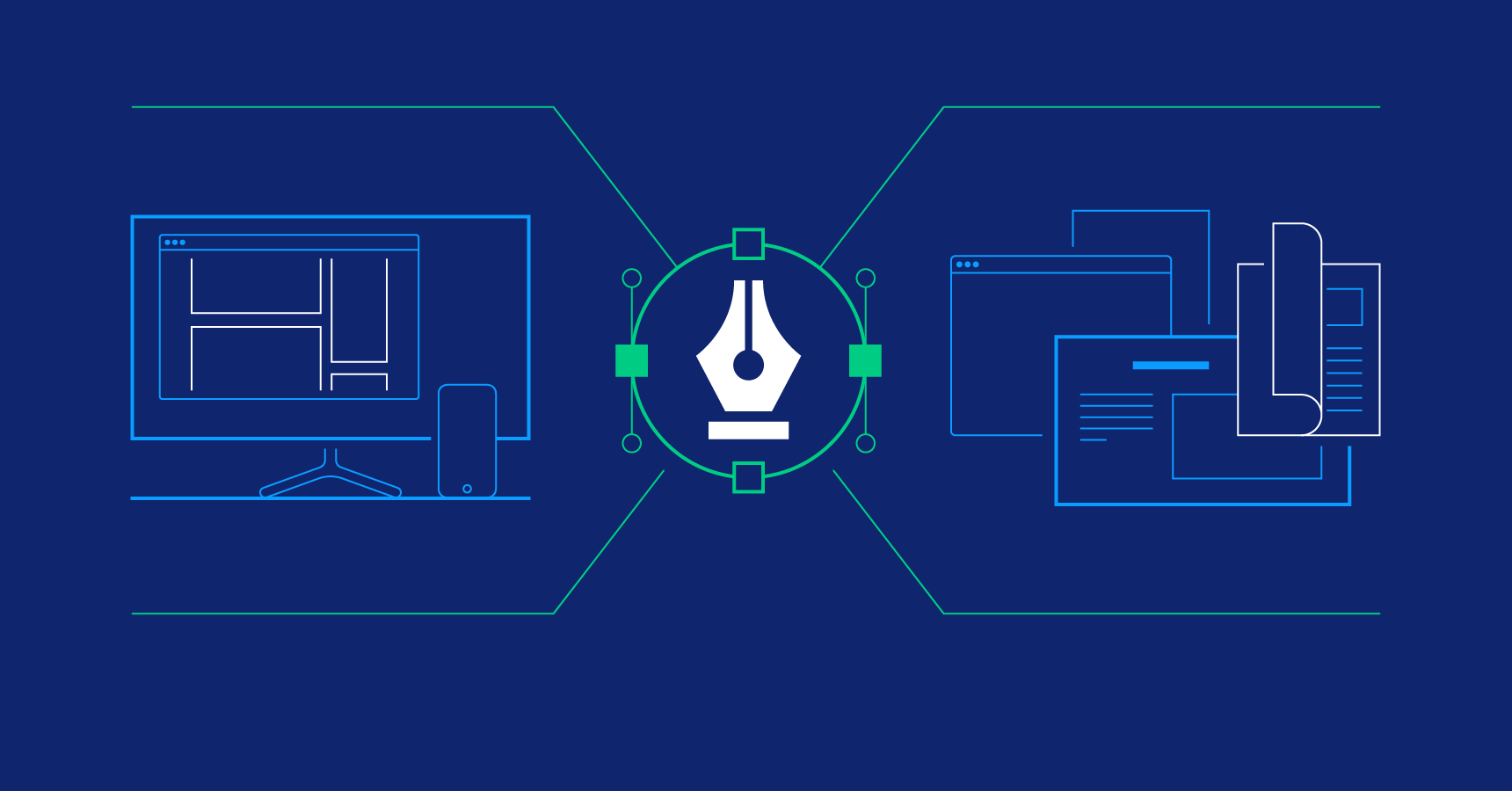
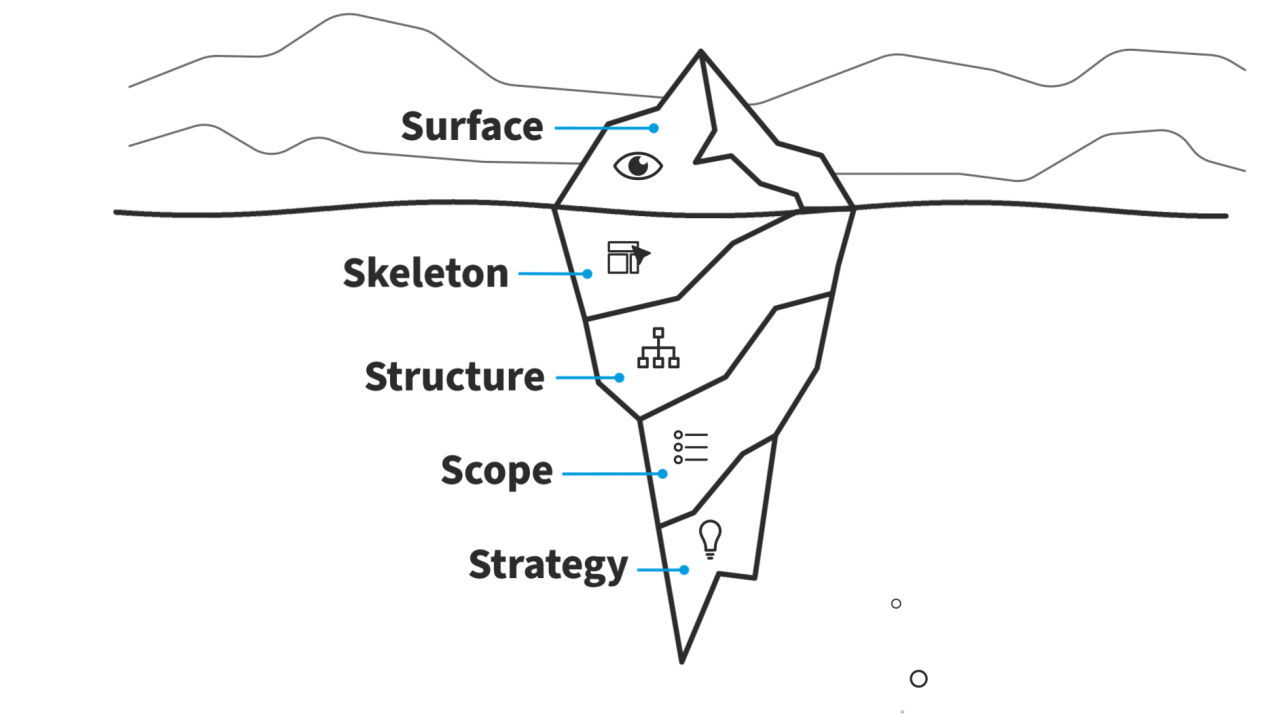
 Difference Between Graphic Design & Visual Design
Difference Between Graphic Design & Visual Design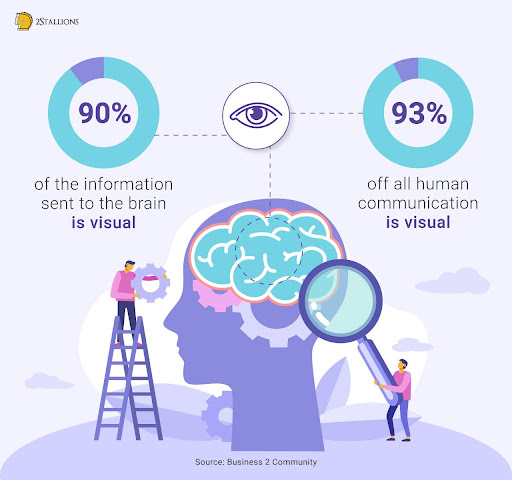 Humans Are 90% Visually-driven
Humans Are 90% Visually-driven